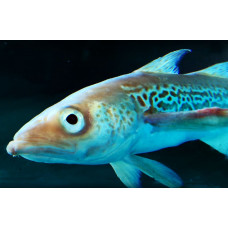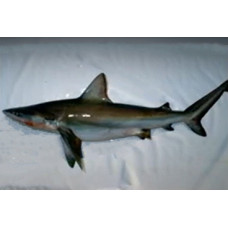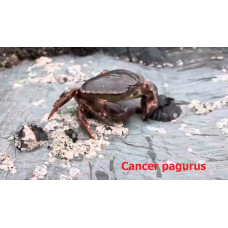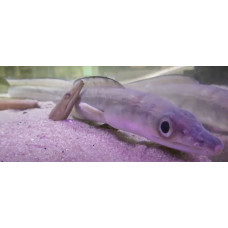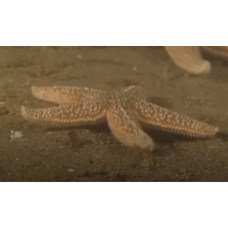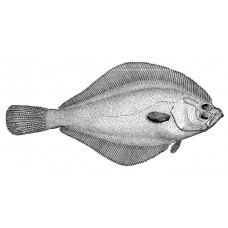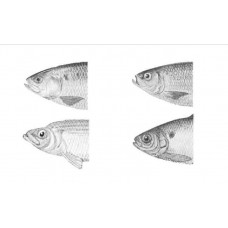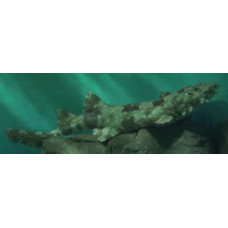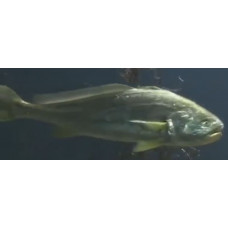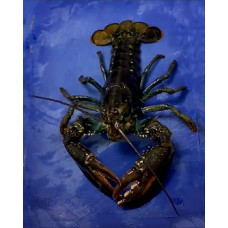Fauna of the Yellow Sea
 A shallow, semi-enclosed shelf sea of the Pacific Ocean off the east coast of Asia, west of the Korean Peninsula. Like all Asian areas of the world's oceans, the Yellow Sea is inhabited by a wide variety of fish species. Winter mixing and river runoff provide his biological productivity.
A shallow, semi-enclosed shelf sea of the Pacific Ocean off the east coast of Asia, west of the Korean Peninsula. Like all Asian areas of the world's oceans, the Yellow Sea is inhabited by a wide variety of fish species. Winter mixing and river runoff provide his biological productivity.
Zooplankton of the Yellow Sea
In the Yellow Sea, 40% of the zooplankton biomass consists of Copepod. Plankton biomass is very high in the southern part of the sea, while the amount of zooplankton decreases towards the north. Sponges, molluscs, echinoderms and coelenterates dominate in terms of abundance in the Yellow Sea.
Commercial fishing in the Yellow Sea
There are more than 300 species of fish in the Yellow Sea. It is rich in biological resources and there is industrial fishing of cod, herring, pomfret, cephalopods (squid, octopus), bivalves (oysters, mussels), crustaceans (crabs, lobsters, crawfish, shrimp), and others.
According to scientists, the state of the Yellow Sea's bioresources has changed significantly over the past 30 years, and they attribute this to global warming: the water temperature in the Yellow Sea basin has increased by 1-2 degrees, which has caused some fish species to migrate north. In particular, populations of large fish have declined and the number of small species and molluscs, which have become the area's main commercial resource, has increased. Another reason for the sharp decline in fish numbers is the reduction in the numbers of migratory fish species. For example, if in the 80s of the last century, 30% of the total catch in the Yellow Sea basin was Largehead hairtail, this proportion has now fallen threefold to 10%. At the same time, 40% of the total catch in the basin today is Japanese anchovy, which is becoming the most important species for Yellow Sea fishermen.
The most common inhabitants of the Yellow Sea
There are many species of marine life, from microscopic organisms to large inhabitants such as sharks and dolphins. The seabed is home to echinoderms (sea urchins, starfish, snake-tails), sea snakes and worms. There are many species of fish, mostly demersal (chameleon goby, yellowfin goby, flathead flounder), but also pelagic (Alaska pollock, Pacific saury, Pacific jack mackerel, Pacific sardine, large yellow croaker). Pufferfish, daggertooth pike conger, rhizostomeae jellyfish and common jellyfish, which are popular in restaurants in Japan, China and South Korea, are also common.
Mammals of the yellow sea
The spotted seal is the only seal species found in the Yellow Sea. There is a sanctuary for them in Bennendo, which is also known for its featherless porpoises. Great white sharks are known to hunt seals in the area. Whaling has been a major factor in the decline of the mammals. Species in the area today include cetaceans such as the minke whale, orca, false killer whale and Indo-Pacific finless porpoise, but all exist in very small numbers. Historically, large whales have been very common in the Yellow Sea. For example, there used to be a unique population of native fin whales and grey whales, and there may have been some North Pacific right whales and humpback whales all year round, except for migratory species such as Baird's beaked whales. Even the blue whale, Japanese sea lion, dugong (southern regions only) and leatherback sea turtle used to breed or migrate to the Yellow Sea.
Yellow sea sharks
The Yellow Sea is home to several species of catshark, Squaliformes, Parascylliidae, houndshark, requiem shark, hammerhead shark, as well as bignose shark, Japanese wobbegong, pelagic thresher, shortfin mako shark.
Alaska pollock
Latin nameGadus chalcogrammusOther namesWalleye pollockIdentificationAlaska pollack have very large ..
Bignose shark
Latin nameCarcharhinus altimusOther namesCarcharhinus altimusIdentificationThey have a heavy body wi..
Chameleon goby
Latin nameTridentiger trigonocephalusOther namesTridentiger trigonocephalusIdentificationThe body is..
Cod, Pacific
Latin name Gadus macrocephalus Other names Сod, gray cod, true cod; French: morue du Pacifique; ..
Copepoda
Division Crustacean. Class Crustacean. Body length 0.1 mm to 3 cm. The antennae are long, serve as s..
Crabs
An infraorder of ten-legged crustaceans living in salt and fresh water.Crabs (Brachyura) are short-t..
Daggertooth pike conger
Latin nameMuraenesox cinereusOther namesDarkfin pike eel IdentificationThe muzzle is long. The ..
Echinodermata
Echinodermata are an independent and very peculiar type of the animal world. According to the plan o..
Flathead flounder
Latin nameHippoglossoides dubiousOther namesHippoglossoides dubiousIdentificationBody moderately tal..
Herring
Latin name Clupea Other names American Shad, Atlantic Herring, Alewife, Threadfin Shad Identific..
Japanese anchovy
Latin nameEngraulis japonicusOther namesEngraulis japonicusIdentificationBody elongated, moderately ..
Japanese wobbegong
Latin nameOrectolobus japonicusOther namesJapanese carpet shark, fringed shark.IdentificationThey ha..
Large yellow croaker
Latin nameLarimichthys croceaOther namesYellow croaker, croceine croaker.IdentificationThe caudal pe..
Largehead hairtail
Latin nameTrichiurus lepturusOther namesBeltfish, Atlantic cutlassfish, Pacific cutlassfish, Japanes..
Lobster
Lobsters (Nephropidae) are a division of the suborder Reptantia of the order Decapoda. In appearance..

